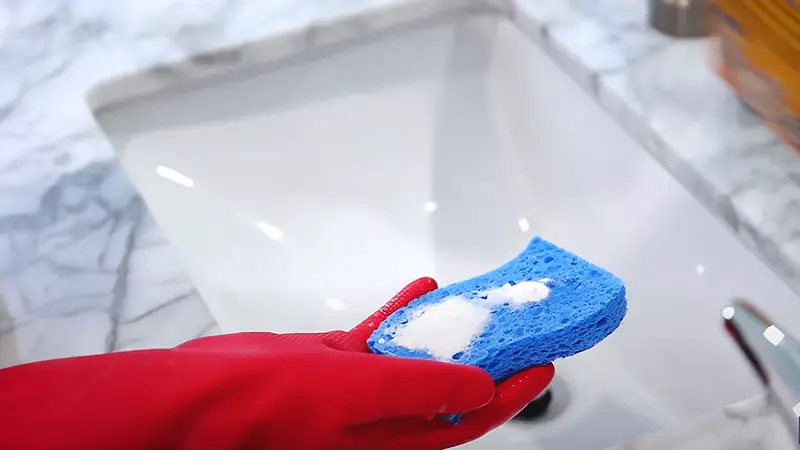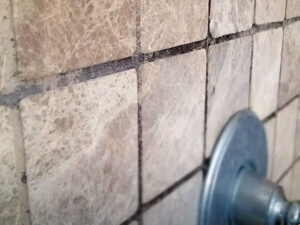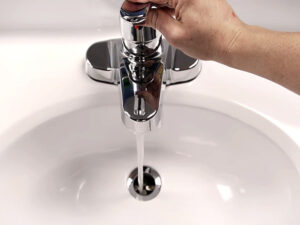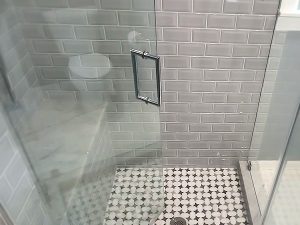Tired of a blocked bathroom sink and black sludge? Your needs are met! This article will show you how to restore your bathroom sink. You can remove black sludge from your bathroom sink with the correct direction and a few easy equipment.
We know a blocked sink is irritating, but don’t worry. We’ll teach you how to remove soap scum, hair, toothpaste, and other junk step-by-step. Your bathroom sink may be cleaned and repaired without a plumber. We have everything you need to clean your sink, from safety to utilizing baking soda and vinegar.
What is Black Sludge from the Bathroom Sink?
Black bathroom sink sludge is disgusting and may build up in drains. It looks like black, slimy goop and shouldn’t be in your bathroom. This black sludge generally contains soap scum, hair, toothpaste, and other stuff that goes down the drain. These objects may build up on drain pipes and cause a problem.
Slow drainage, foul odors, and sink blockages may result from this muck. It must be addressed since it may make your bathroom unsanitary and unpleasant. No one enjoys a stinking bathroom!
Black sludge may be removed by plunging or pouring hot water down the drain. A plumber should be called if the condition is serious or recurring. They have the equipment and skills to remove and prevent muck.
In summary, black sludge in the bathroom sink may clog the drain and stink up the bathroom. Care for your sink often to keep it clean and happy!
Can You Define Black Sludge in the Context of a Bathroom Sink?
Black sludge in a bathroom sink may accumulate over time and is disgusting. A slimy, black stuff may be seen in the drain or sink edges. This sludge might appear like dirt, soap scum, hair, and other drain debris. Don’t put it in your sink.
Mixed debris in pipes creates black sludge. When you wash your hands or brush your teeth, soap, toothpaste, and hair may go down the sink. Black sludge forms when these items mix with dirt and filth. Mold or mildew may form in the sink’s warm, damp drain.
The black sludge may stink and foul your sink. However, it may delay sink water drainage as well as look good. If your sink takes longer to drain or you observe a dark, slimy material, you may have black sludge.
Clean your sink and drain frequently to avoid black muck. Vinegar and baking soda may help clean your sink and avoid sludge. Keeping hair and debris out of the drain also helps.
In conclusion, bathroom sink black sludge is a disgusting, dark material that may clog the drain. Soap, hair, and filth in pipes make it. This gross thing may be prevented from taking over your sink by regular cleaning and healthy sink practices.
Why Does Black Sludge Build Up in Bathroom Sink Drains?
A combination of factors causes black muck in bathroom sink drains. We wash soap scum, hair, toothpaste, and grime down the sink, which is the major cause. These contaminants may accumulate within pipes over time.
One major factor is soap. When we wash our hands or use soap in the sink, microscopic soap particles travel down the drain. A sticky material forms when these particles interact with water minerals. More soap in the drain increases sludge.
Hair also causes problems. Hair may become stuck in pipes when we brush or wash it. Over time, it becomes a thick sludge containing soap and other crud.
Also problematic is toothpaste. Small particles attach to pipes. Toothpaste travels down the drain with the sludge when we brush and rinse.
Dust and dirt we wash off our hands and faces in the sink contribute. They combine with other compounds to form black sludge.
Bathrooms are warm and damp, so these materials bind to make sludge. When sludge builds up, it may delay or block the drain. That’s when your sink may drain slowly or smell bad.
Regular pipe cleaning and maintenance prevent black sludge in bathroom sink drains. Commercial drain cleaners like baking soda and vinegar work. Avoid dumping too much hair and soap scum down the drain. Try these to keep your bathroom sink drain clean and clear of black gunk.
Is Black Sludge in Bathroom Sinks a Common Issue?
Lots of people deal with gross black gunk in their bathroom sinks. It’s actually quite common. Over time, gross black sludge can clog your bathroom sink pipes. Drains get clogged with soap scum, hair, toothpaste, and other gunk. When they combine, it becomes a messy, sticky goo that turns black.
This issue is common because bathroom products like soap and toothpaste have fatty or oily substances. When substances go down the drain, they stick to the pipes and attract other particles like hair and dirt. Over time, it can create gross black sludge.
Bathroom sinks are used a lot, so they get dirty often. We take care of ourselves by washing up and tidying up around the sink. This can lead to gunk buildup in the pipes.
Good news! Black sludge is common but usually not a big problem. Clogs can slow water and stink, but usually not a big plumbing problem. Just clean and maintain it.
Keep your bathroom sink clean and be careful about what goes down the drain to avoid black sludge buildup. Try using baking soda and vinegar to clean your pipes and keep them flowing well. If things don’t get better, you can ask for professional help.
Don’t worry, lots of people deal with black sludge in their bathroom sink too. It’s a common issue, but we can handle it with care.
How to Remove Black Sludge from Bathroom Sink
Cleaning black sludge from a bathroom sink can be tough, but with the right tools and methods, you can make it clean and free of buildup. Here’s a guide to removing black sludge from a bathroom sink:

Materials and Tools You’ll Need
- Rubber gloves
- Safety glasses (optional)
- Plunger
- Screwdriver
- Bucket
- An old toothbrush or scrub brush
- Baking soda
- White vinegar
- Boiling water
- A drain snake (optional)
Step 1: Start with Safety
Safety is paramount while cleaning black sludge from your bathroom sink. Wear sturdy rubber gloves to protect your hands from dangerous toxins when cleaning. You may wish to use protective glasses if the muck is severe and splashy. These steps will let you work without worry while protecting your health.
Step 2: Remove Stopper
Remove the sink stopper or drain cover to access the drain and remove the black muck. How to remove a sink depends on its kind. Some stoppers are kept in place by screws, clamps, or other fasteners, requiring a screwdriver or tool to remove. Remember to save any screws or components you remove for reinstallation. Removing the stopper reveals the drain hole, letting you examine the plumbing and find the sludge problem.
Step 3: Plunge the Drain
Now that you have drain access, start removing the black muck. Use a plunger to plug the sink drain. Fully cover the drain hole with the plunger’s rubber cup. Use a strong up-and-down plunger action to remove sludge. This motion may force sludge out of the drain, particularly if it’s near the surface. You may encounter resistance, but keep diving to move the muck. This first procedure usually clears small drain clogs.
Step 4: P-Trap Check
The P-trap, a vital part of bathroom sink plumbing, collects black sludge. Its U-shaped design traps trash to prevent them from entering your plumbing system. Sludge and other things may collect here over time. Place a pail or cloth under the P-trap to clear this usual clog. This precaution will collect any water or debris that may flow out.
With the bucket in position, gently detach the P-trap by hand or with a tool. Slowly disconnect it from the sink drain and wall plumbing. Empty the P-trap into the bucket after separation. This curving pipe has a lot of muck, hair, and debris. Use a wire brush or old toothbrush to clean the P-trap thoroughly. Cleaning the P-trap is essential to resolving the sludge problem and restoring bathroom sink drainage.
Step 5: Baking Soda and Vinegar
If black sludge is further down the drain than the P-trap, use a simple and efficient DIY cleaning. Start by throwing 1/2 cup baking soda down the drain. Add equal amounts of white vinegar for a fizzing chemical reaction. This process breaks down drain sludge and organic debris.
Let the baking soda-vinegar combination settle for 15–20 minutes. As the chemical process continues, the sludge will soften and become simpler to remove. Chemical drain cleaners may damage pipes and the environment, but this eco-friendly method is a good option.
Step 6: Boiling Water
After the baking soda and vinegar solution has worked on the sludge, rinse away the debris. Carefully pour boiling water down the sink drain. Boiling water rinses softened muck and disinfected drains.
Avoid scalds by handling hot water carefully. Avoid splashing by pouring carefully and straight down the drain. Heat will break down leftover muck and unclog pipes. This procedure usually restores water flow and reduces sludge-related smells.
Step 7: Scrub Drain
Now that the drain is open and the black sludge is partly gone, clean your sink. Use an old toothbrush or scrub brush for this stage. Scrub the drain hole and surroundings. This removes any lingering sludge and leaves your sink clean and residue-free. Dirt and filth collect around the drain, so pay care.
Clearing the drain and surrounding surfaces eliminates sludge smells and improves hygiene. A clean sink and drain looks better, functions better, prevents obstructions, and keeps the bathroom fresh.
Step 8: Reassemble
After cleaning the drain, reassemble all the parts. Securely reconnect the P-trap to the drain pipe and wall plumbing. Tighten connections to avoid leakage. Reattach the stopper or drain cover using any screws or clamps you removed in Step 2. Reassembling the sink components properly prevents leaks and preserves your plumbing system.
Step 9: Drain Test
Start the water and let it run for a few minutes to finish. This is essential to ensure the drain is running smoothly and there are no clogs. Watch the sink drain rate. After removing the black sludge from your bathroom sink, it should drain smoothly without backlog or sludge.
Any issues throughout this test may suggest sludge or an underlying issue. If so, you may need to repeat certain procedures or use a drain snake for deeper cleaning. If the problem continues or you’re uncomfortable with these procedures, call a plumber to diagnose and fix more difficult plumbing problems.
How Do You Avoid or Remove Black Muck in Sink Drains?
Black sludge in sink drains must be prevented and removed to keep bathrooms clean and sinks running properly. Black sludge prevention and removal are easy with these procedures.
- Regular Cleaning: Preventing black sludge requires regular sink drain cleaning. A simple yet efficient approach is baking soda and vinegar. After half a cup of baking soda, pour a cup of vinegar down the drain. Fizz and rest for a few minutes, then rinse with hot water. This breaks down and removes sludge-forming elements.
- Use a Drain Strainer: Use a drain strainer or hair catcher to prevent hair, soap scum, and other material from entering the drain. Installation and maintenance are simple with these inexpensive devices. Skudge may be avoided by emptying the strainer regularly.
- Avoid Pouring Grease: Never dump cooking fat or oil down the drain to prevent sludge. Let the grease cool and harden in a separate container before throwing it away.
- Hot Water Rinse: After each usage, flush the drain with hot water. This easy action may clean pipes and drain out sludge-forming contaminants.
- Biological Cleaners: Use drain cleaners with helpful microorganisms that break down organic debris in pipes. Eco-friendly cleansers may prevent sludge buildup.
- Avoid Hair Buildup: Sink drain sludge often contains hair. Brush your hair before bathing and use a sink hair catcher or strainer to avoid accumulation.
- Avoid Chemical Drain Cleaners: Chemical drain cleaners may work quickly, but they may damage pipes and leave sludge behind. Non-toxic procedures are safer for plumbing.
- Check for Leaks: Leaks may foster sludge formation. Check for leaks in your pipes and patch them immediately.
- Professional Cleaning: If your sink drain has a lot of black muck, call a specialist. Plumbers use drain snakes or hydro-jetting devices to clear sludge and restore drainage.
Finally, avoiding and eliminating black sludge from sink drains is important for plumbing system performance and bathroom cleanliness. By taking these precautions and using the right removal procedures, you may have a pleasant bathroom experience and extend the life of your plumbing system.
Final Words
With the correct equipment and knowledge, anybody can remove black sludge from their bathroom sink. This blog article shows how to keep your sink clean, odor-free, and clog-free. Maintaining and avoiding sludge accumulation can keep your bathroom sink running smoothly for years.
Follow safety guidelines, such as wearing gloves and using natural cleaning products, and seek expert treatment if problems continue. With these suggestions, your bathroom sink will be cleaner and more useful. Remove the nasty gunk and reveal a gleaming sink!







